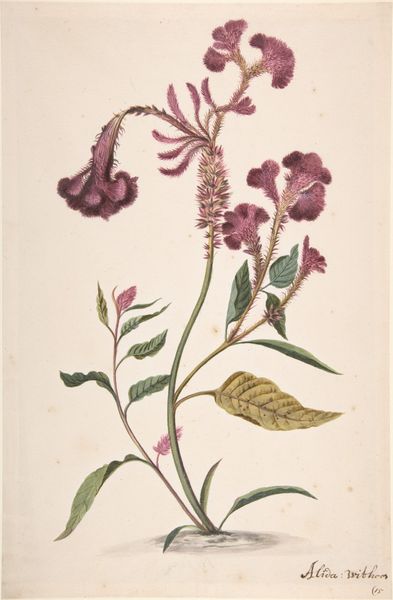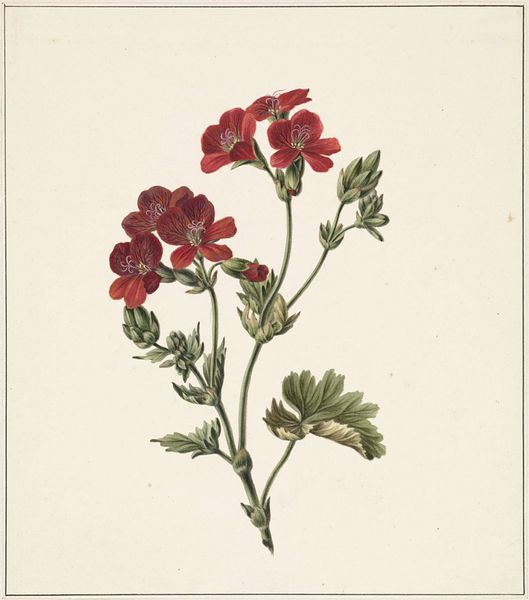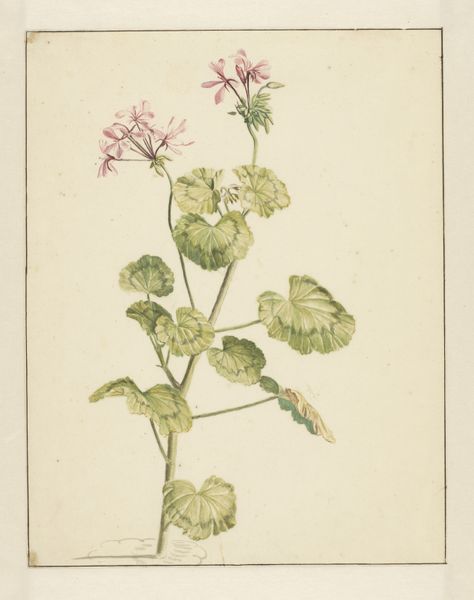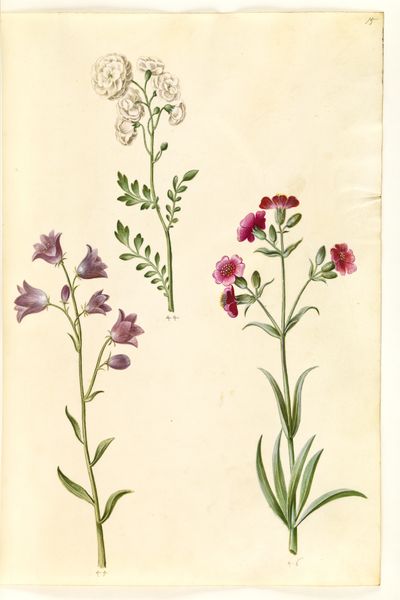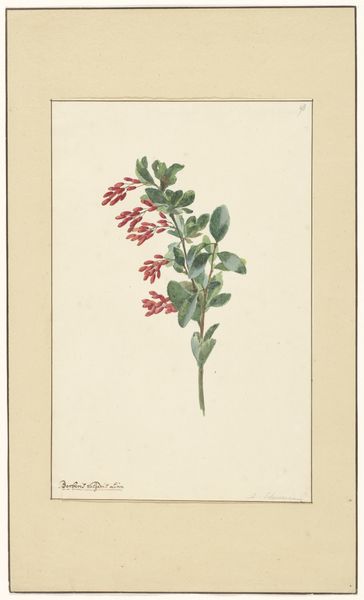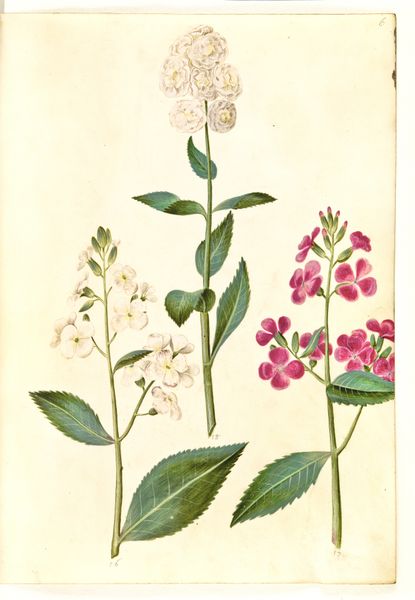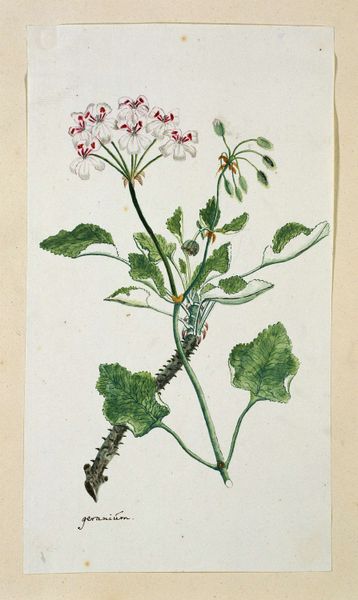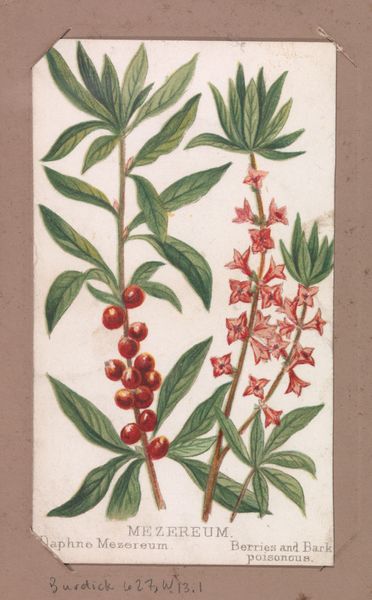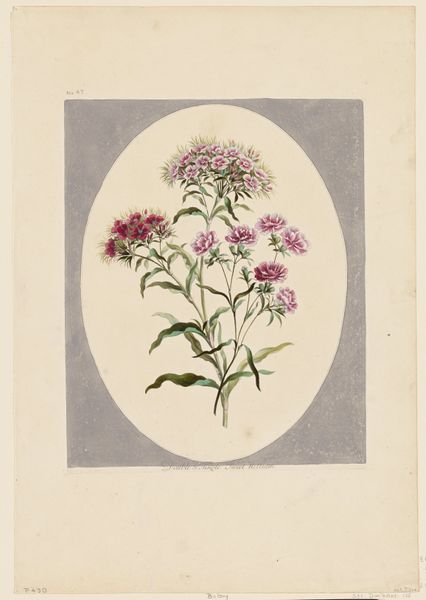
drawing, print, watercolor
#
drawing
# print
#
watercolor
#
plant
#
botanical drawing
#
watercolour illustration
#
botanical art
#
watercolor
Dimensions: sheet: 15 9/16 x 9 7/8 in. (39.6 x 25.1 cm)
Copyright: Public Domain
Curator: Welcome. We're looking at "Perennial Pea" by Jan Jansz. van der Vinne, created between 1750 and 1805. It's a lovely botanical drawing using watercolor, ink, and graphite. Editor: It has such a delicate feel, almost dreamlike. The colors are muted, the pea's vines swirl across the page—there is something very soothing in the depiction of organic material. Curator: Indeed. Considering the period, the availability of paper, pigments, the craft itself, are telling. Who was Van der Vinne creating this for? What were the methods of watercolor creation during the 18th century? I’d be very curious about the water source. Was it local? Purified? Did that affect the medium itself? Editor: It's tempting to consider this beyond simple botanical documentation and connect it to broader ideas during that era— the Enlightenment, for example, with its impulse to classify and understand the natural world, and perhaps, how that plays into themes of gender and race. Was this a scientific pursuit, a decorative commission, or something more personal for the artist? Curator: I am drawn to its formal simplicity. Van der Vinne’s "Perennial Pea" begs a material investigation, particularly considering his craft. What type of paper did Van der Vinne use? The transparency and layering are so key. Was he a master craftsman, and how was his artwork regarded within his own artisan circles? Did he belong to a guild? Editor: And it makes me wonder, was there any dialogue with horticultural practices and gender during this era? Were depictions such as these considered "suitable" occupations for the artist if we imagine a male or female? Also, what do representations of plants such as this represent to viewers of the time? Is it simply aesthetics? Curator: It is likely a mixture, wouldn’t you say? In some regard it could represent status or access to such botany. However, access does not account for skillful application and artistic sensitivity, regardless of whatever political leanings Van der Vinne might hold, as he seems invested in process. Editor: It’s so true, though it certainly gives us a more concrete place to anchor our inquiry. Food for thought. Curator: Exactly! Let's keep these complexities in mind as we turn to our next work.
Comments
No comments
Be the first to comment and join the conversation on the ultimate creative platform.
